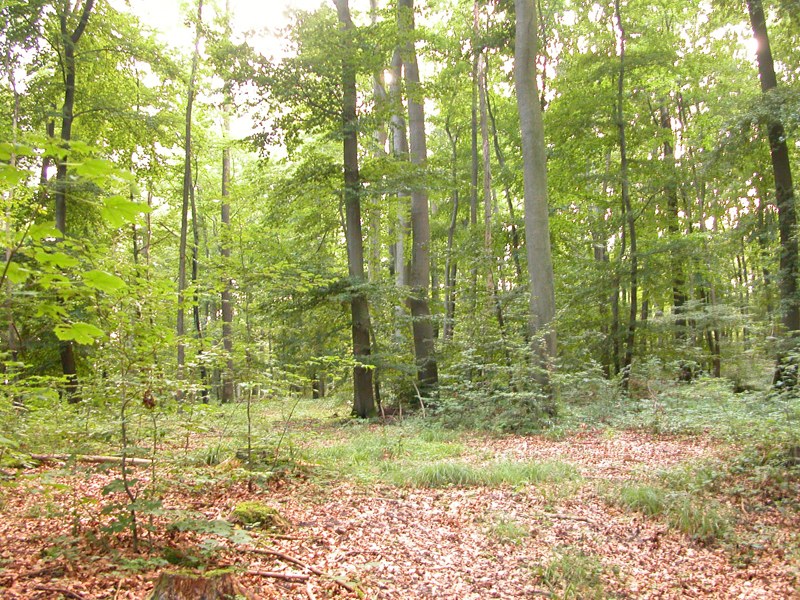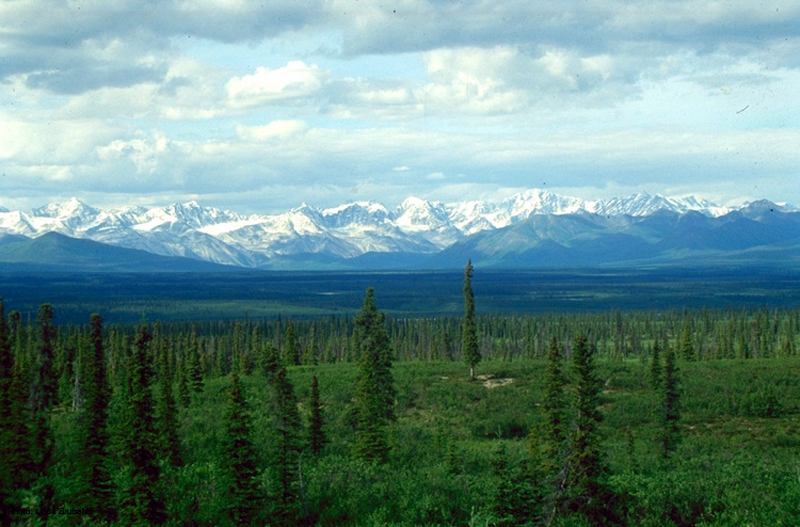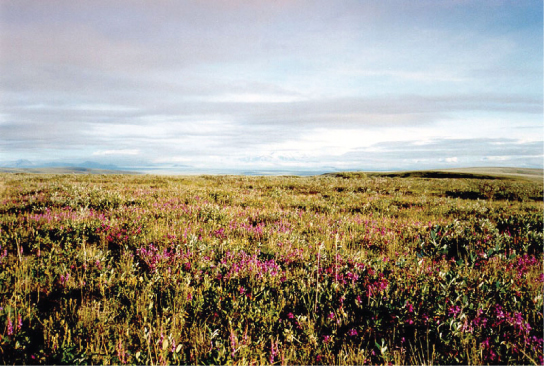| << Chapter < Page | Chapter >> Page > |
Because of the moderate annual rainfall and temperatures, deciduous trees are the dominant plant in this biome ( [link] ). Deciduous trees lose their leaves each fall and remain leafless in the winter. Thus, no photosynthesis occurs in the deciduous trees during the dormant winter period. Each spring, new leaves appear as the temperature increases. Because of the dormant period, the net primary productivity of temperate forests is less than that of tropical wet forests. In addition, temperate forests show less diversity of tree species than tropical wet forest biomes.

The trees of the deciduous forests leaf out and shade much of the ground; however, this biome is more open than tropical wet forests because trees in the temperate forests do not grow as tall as the trees in tropical wet forests. The soils of the deciduous forests are rich in inorganic and organic nutrients. This is due to the thick layer of leaf litter on forest floors. As this leaf litter decays, nutrients are returned to the soil. The leaf litter also protects soil from erosion, insulates the ground, and provides habitats for invertebrates (such as the pill bug or roly-poly, Armadillidium vulgare ) and their predators, such as the red-backed salamander ( Plethodon cinereus ).
The coniferous forest, also known as taiga or boreal forest, is found south of the Arctic Circle and across most of Canada, Alaska, Russia, and northern Europe ( [link] ). This biome has cold, dry winters and short, cool, wet summers. The annual precipitation is from 40 cm to 100 cm (15.7–39 in) and usually takes the form of snow. Little evaporation occurs because of the cold temperatures.
The long and cold winters in the coniferous forest have led to the predominance of cold-tolerant cone-bearing plants. These are evergreen coniferous trees like pines, spruce, and fir, which retain their needle-shaped leaves year-round. Evergreen trees can photosynthesize earlier in the spring than deciduous trees because less energy from the sun is required to warm a needle-like leaf than a broad leaf. This benefits evergreen trees, which grow faster than deciduous trees in the coniferous forest. In addition, soils in coniferous forest regions tend to be acidic with little available nitrogen. Leaves are a nitrogen-rich structure and deciduous trees must produce a new set of these nitrogen-rich structures each year. Therefore, coniferous trees that retain nitrogen-rich needles may have a competitive advantage over the broad-leafed deciduous trees.
The net primary productivity of coniferous forests is lower than that of deciduous forests and tropical rain forests. The above ground biomass of coniferous forests is high because these slow-growing tree species are long lived and accumulate standing biomass over time. Plant species diversity is less than that seen in deciduous forests and tropical rain forests. Coniferous forests lack the pronounced elements of the layered forest structure seen in tropical wet forests. The structure of a coniferous forest is often only a tree layer and a ground layer ( [link] ). When conifer needles are dropped, they decompose more slowly than broad leaves; therefore, fewer nutrients are returned to the soil to fuel plant growth.

The Arctic tundra lies north of the subarctic boreal forest and is located throughout the Arctic regions of the northern hemisphere ( [link] ). The average winter temperature is -34 °C (-34 °F) and the average summer temperature is from 3 °C to 12 °C (37 °F–52 °F). Plants in the arctic tundra have a very short growing season of approximately 10–12 weeks. However, during this time, there are almost 24 hours of daylight and plant growth is rapid. The annual precipitation of the Arctic tundra is very low with little annual variation in precipitation. And, as in the boreal forests, there is little evaporation due to the cold temperatures.
Plants in the Arctic tundra are generally low to the ground ( [link] ). There is little species diversity, low net primary productivity, and low aboveground biomass. Deeper soils of the Arctic tundra may remain in a perennially frozen state referred to as permafrost. The permafrost makes it impossible for roots to penetrate deep into the soil and slows the decay of organic matter, which inhibits the release of nutrients from organic matter. During the growing season, the ground of the Arctic tundra can be completely covered with plants or lichens.


Notification Switch
Would you like to follow the 'Principles of biology' conversation and receive update notifications?